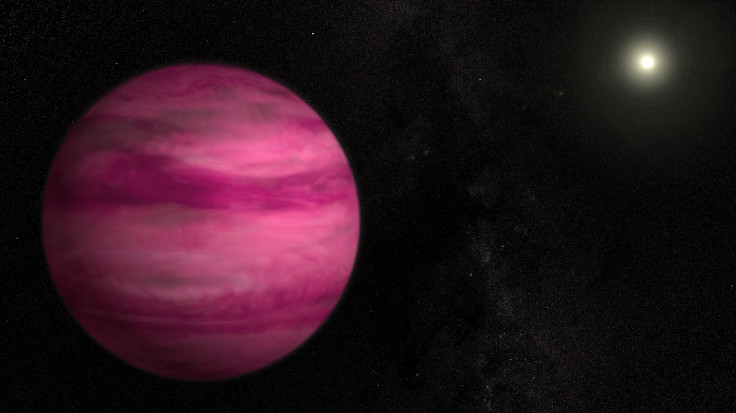‘Second Jupiter:' Dark Cherry Blossom-Like Low-Mass Exoplanet Discovered With Sun-Like Star

An international team of astronomers has discovered a giant exoplanet around a Sun-like star, which, according to scientists, weighs in at about four times that of Jupiter's mass.
Scientists said that the new planet, dubbed “GJ 504b,” was captured using infrared data from the Subaru Telescope in Hawaii, and that it is the lowest-mass planet ever discovered around its own star, “GJ 504,” by using direct-imaging techniques.
"Imaging provides information about the planet’s luminosity, temperature, atmosphere and orbit, but because planets are so faint and so close to their host stars, it's like trying to take a picture of a firefly near a searchlight," Masayuki Kuzuhara at the Tokyo Institute of Technology, who led the discovery team, said in a statement.
Scientists said that GJ 504b, which is also called "Second Jupiter," orbits its star, which is slightly hotter than the sun, at nearly nine times the distance Jupiter orbits the sun -- a characteristic that challenges theoretical ideas of how such giant planets are formed.
Scientists said that GJ 504b is about four times heavier than Jupiter and has a temperature of about 460 degrees Fahrenheit (237 Celsius). The planet’s star lies 57 light years away and the system is estimated to be about 160 million years old.
"If we could travel to this giant planet, we would see a world still glowing from the heat of its formation with a color reminiscent of a dark cherry blossom, a dull magenta," Michael McElwain, a member of the discovery team at NASA's Goddard Space Flight Center in Greenbelt, Md. said in the statement. "Our near-infrared camera reveals that its color is much more blue than other imaged planets, which may indicate that its atmosphere has fewer clouds."
According to the core-accretion model, a widely accepted model followed by astronomers, huge planets like Jupiter start forming in the gas-rich debris disk that surrounds a young star. Such planets get a core, which later serves as a seed, from crashing asteroids and comets, and when the core reaches enough mass, its gravity starts attracting gas from the disk to form the planet.
The model works fine for planets orbiting their star from a distance of about 30 times Earth’s average distance from the sun, which is measured as 30 astronomical units, or AU. But, for planets that are located farther from their stars, the model is quite problematic. GJ 504b's projected distance from its star is 43.5 AU.
"This is among the hardest planets to explain in a traditional planet-formation framework," Markus Janson, a Hubble postdoctoral fellow at Princeton University in New Jersey, said in the statement. "Its discovery implies that we need to seriously consider alternative formation theories, or perhaps to reassess some of the basic assumptions in the core-accretion theory."
The research, which is due to be published in The Astrophysical Journal, is part of the Strategic Explorations of Exoplanets and Disks with Subaru, or SEEDS. Started in 2009, SEEDS is a five-year project that looks for extrasolar planets around several hundred nearby stars using the Subaru Telescope.
© Copyright IBTimes 2025. All rights reserved.






















